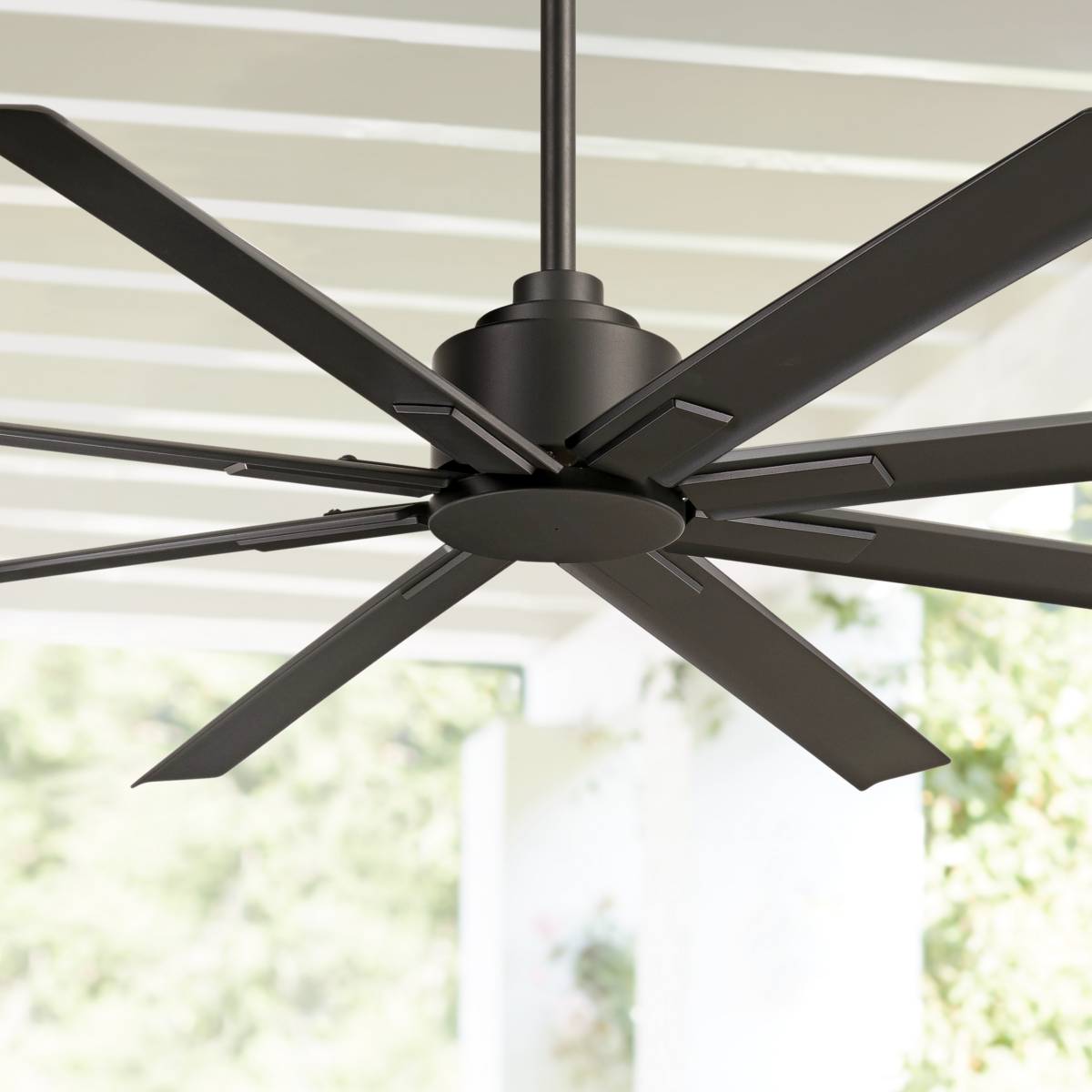Butler Ceiling Fan Guide
Get Started
Download Ceiling Fan Guide
What To Understand Before Researching & Buying A Ceiling Fan
Though a ceiling fan may seem like just another piece of the larger puzzle of putting together a room in a house, it’s not always that simple. Fans can be a complex thing and can arrive with the requirement of purchasing all kinds of different components and accessories that make the fan function as intended.
Some of the more common fan related items that are usually sold separately are downrods, wall controls remote controls, sloped ceiling adaptors, light kits, and even the blades and motor. Though there are times when these items are included, there is no doubt that purchasing a fan is harder than it seems. Sometimes the kind of fan accessories you need is determined by your house. For example, a standard downrod is 4 to 6 inches. This will be the kind of rod included with your fan most of the time.
However, your ceiling may be over 10 feet, in this case you’ll need to purchase a separate, longer rod. If your ceiling is sloped, this could require you to purchase a separate canopy for it. If you need an outdoor fan, then the fan needs to be damp and wet rated. Fans can be difficult to purchase, but we at Butler Lighting USA are here to help. In this guide we hope to help you understand the ins and outs of buying a fan. If you need further assistance, feel free to contact us and we can help you identify what kind of fan is needed for your project.
Budgeting
The first thing at the top of everyone’s mind when doing any home project is cost. Your budget will be the first thing to help you determine what kind of fan you can purchase for your project.

Small Budget
With a small budget, you can only really shop for fans with an eye for functionality, rather than aesthetics. A small budget won’t leave you with many options to really customize your fans, but you should be able to purchase a fan for each room in your house for under $200 each. If there is a room that you don’t need a fan in, you can use the extra budget on sprucing up a fan in another room. Try to focus your budget on your master bedroom, and other important rooms in your house. You may be able to work an outdoor fan into a small budget, but they get expensive if you try to purchase multiple.

Medium Budget
On a medium budget you can start to look into using better lights like LED lights, and you have access to more aesthetic options. LEDs cost more upfront, but ultimately will cost you less down the line. With this option you’ll start finding options that are more reliable and that look better. In this budget you’ll also be able to access outdoor fans that are wet, and damp rated. You can also make use of wall mounted fans, large fans, and smart fans.

Large Budget
If you are working with a large budget you have access to complex fans and can even splurge on more unique fan types. Most people with a large budget can make use of modern designs. You can also customize each component of a given fan. You can customize the blades, the motor, and the light kit of a given fan. You can also customize how each fan is controlled, which usually costs the most in these situations. Regardless of which budget size you have, the amount of money you need to spend will depend on the amount of fans you want, and their sizes.
Design Types
Fans can come in all shapes and sizes and depending on what you’re looking for, there should be many options for you to choose from. Some of the most common fan types can be seen below.
52” Ceiling Fan
A standard ceiling fan is 52” when measured from blade to blade. Most of these fans also come with 5 blades. However, both 3-blade and even 5+ blade fans are becoming more and more popular in all sizes. Ceiling fans can come in many unique designs and can be acquired at nearly any price point.
Oversized Fan
Another common fan type is the oversized fan. These fans are 72” or more, and can be used in a variety of locations. Typically, you’ll find these fans in large spaces. You’ll find them in garages, warehouses, gyms, work out rooms and commercial buildings. These are only a few of the many places you can find an oversized fan.
3-Blade Fan
Next we have the 3-blade fan. This kind of fan falls under the modern category as it combines functionality with a nice style. They usually have smaller motors to accommodate that style. These fans can come in many styles and most people can find one they like.
Oscillating and Wall-Mounted Fans
Oscillating and wall-mounted fans are another great option. They can be incorporated into an outdoor setting or an indoor setting with ease. Usually, wall mounted fans are used in outdoor settings because they allow for direct air. Oscillating fans can be used for both due to their ability to directly move air around. These fans can both be customized. Both options are great for a variety of settings.
Outdoor
Outdoor fans are different from a typical fan because they need to be wet or damp rated. Being wet rated means these fans can survive being fully soaked in water. When a fan is damp rated it means it can survive light rain, water vapor, or high humidity. Typically, damp rated fans are installed in covered outdoor areas, while wet rated fans can be installed in pretty much any location outside.
Fandeliers
Fandeliers are exactly what they sound like, fans with chandelier-like lights built in. They’ve been around for a while, but recently people have started to experiment more heavily with them. The styles have become more unique with an emphasis on bold and interesting designs. Though these fans are still great for air flow, they are mostly meant to be cool looking light pieces.
Hugger
If you have a ceiling that’s less than nine feet then you may benefit from a hugger fan. These fans are essentially meant to be smaller and hug the ceiling more closely than your typical fan. They allow you to have a fan that is less than 12 inches in height, which will allow you to save room in a smaller space. These fans are meant to mount directly to the ceiling. These can be customized and can be a great option for specific situations.
How To Install
Not every fan is installed the same way. However, listed below are some basic steps to help you install a fan.

The first step to any fan installation job should be to get everything ready beforehand. This means turning off power to the area you’ll be working in and ensuring that you have all the tools necessary for installation. This also means you should check to make sure the fan you purchased fits into your selected spot well. Once you have your tools and materials assembled and your spot prepped, it’s time to work.

After turning off the power, if there is an old fan fixture, remove it before working on the new one. Now, you need to mount the junction box. At this step you need to put the fan brace through the hole you have made in your ceiling. Make sure everything is tight after installation. You will then move on to mounting the bracket. This can vary based on what the instructions on your given fan are, but at this point you are installing the bracket onto the junction box.

Now you should install the downrod. Make sure to run your wires through the downrod and connect it to the fan’s base. Then you should attach the fitting at the top of the rod to mounting bracket you put up already.

This is when you wrap up the process. You will need to wire the fan to your house’s wires. Make sure you follow the instructions given to you with the fan, but at this step you should be able to match each wire on the fan to the corresponding wire in your house.

The last thin you need to do now is install the blades and lights onto your fan. This process will differ depending on what kind of fan you have, but most of the time everything you need will be listed on the box along with instructions. After installing each blade and the lights you can turn power back on in the area and you should have a new fan.
Energy Costs
When it comes to energy costs in fans, there are a few things to keep in mind. First off, the main thing that will determine the energy costs associated with a fan is if they have a light built in. If there is a light built in, of course there will be a higher energy cost associated with it. However, if you’re using LED bulbs, which are becoming more and more popular, rather than socket-based bulbs, then your energy costs will be much lower. LED bulbs burn out slower and are overall more efficient. Though timers would normally be an option for our lighting products, fans do not normally have timers built into them. If a fan of ours would burn out prematurely, you are covered under our warranty for 2-5 years depending on the product you have.
Our Favorite Products
With a large variety of options to choose from, we understand that it might be overwhelming to try and find a fan that works for you. We have gone ahead and listed some of our favorite products.
Cirque 60” Patio Fan
This fan option is great for anyone looking for a 5+ blade ceiling fan. With a modern and relatively simplistic look, this fan will spruce up a room while keeping it cool. This fan is great for any patio. If you have a patio that could use a little airflow, consider the Cirque 60” inch patio fan for your home.
Skylark 54” Ceiling Fan
This fan is a very sleek and modern fan style. With 3 blades and an all-black look, you can slip this fan into any room. The Skylark 54” ceiling fan would be great for a smaller-scale room, or even a medium sized room. It even has a built-in light in the center of it. With a sleek look, this fan is a great option for any buyer. If you want a simple, yet sleek fan, consider this option.
Great Room Traditional 74” Ceiling Fan
This fan from Minka Aire is meant to be used as a large great room fan. With a 5-blade design and a nice bronze color, this fan can bring any great room together. This fan can spice up your great room, while not being too overwhelming. The Great Room Traditional from Minka Aire would look great in any great room you placed it in.
Great Room Traditional 74” Ceiling Fan
Maverick 60” Ceiling Fan
The Maverick Ceiling Fan has a very unique design that really sets it apart from our other favorites. With a 3-blade system in a brown color, this fan can be slipped into any room to spice it up. It also has a built light fixture and a silver ceiling mount. If you’re looking for a nicer option to help liven up a smaller room, consider the Maverick. This fan would look great wherever you put it.
Commercial and Bulk Options
Do you need help with your next lighting or fan project? Look no further than Butler Lighting USA. We offer trade account discounts for all contractors, designers, builders and electricians. We also offer trade pro and B2B discounts to those who qualify and can show proof of their licenses. We at Butler can help you get the best supplies for you next lighting or fan related project. Contact us now to get a quote on your lighting or fan order.
Why Butler?
We at Butler Lighting have been fulfilling the lighting needs of our customers since 1948. Whether you need lighting for your home, multi-family project, or restaurant, we can provide whatever lighting that you need. We will work within your budget to get your lighting to a state that you will love. As a family-run business, we put an emphasis on communication and a commitment to hard work. We at Butler work with over 150 vendors to and we can handle any lighting job you can throw at us. If you have a lighting job, or a job that requires fans that needs to be finished contact us today, and we’ll take your lighting to the next level.
Ceiling Fan FAQs
You need to, first, know the size of fan you need. To know this, you’ll need to find out the height and overall room size of the room you intend to put the fan in. If your ceiling is higher than 10 feet, then you will need to get a longer downrod than will likely be included. If you want a standard ceiling fan, the size is typically 52”. Most bedrooms and great rooms will use this size.
There is no singular ceiling fan that is best all homes. Your biggest factor when looking for a fan that will fit in with your home is how much you’re willing to spend. You’ll typically want to buy from a specialized company that sells fans, lighting, and related supplies. Some companies we like are Craftmade, Quorum, Big Ass Fans, Modern Forms Fans, and Matthews Fan Company.
There is no one fan that is better than the others. It all depends on preference. A standard fan is 52” and has 5 blades. Though, there are many different kinds of fans on the market. Of course, selecting which one is best for you will depend on your budget, scope, the what kind of end goal you had in mind with your fan.
A 3-blade fan and a 5-blade fan both move the same the amount of air more or less, even if seems like the 5-blade would be better. 3-blade fans usually have a more transitional or modern style, while 5-blade fans can come in a large variety of styles. Though both are versatile, you can work a 3-blade fan into almost any interior, or exterior at your home, office, or commercial project.
The longer the fan blades on your fan, the higher the CFM, which stands for cubic feet per minute. It’s also important to note the pitch in the blades of the fan to see if the fan will be moving higher or lower. You typically are going to want a fan with blades at 14-16 degrees to get the best results. There are fans that have blades at 20-26 degrees. CFM is the best way to see how much air movement the fan provides.
The best way to measure how quickly the blades of a fan circulate air is through measuring their RPM. This stands for rotations per minute. Though it may be best to check the CFM to see how air a fan will give out. It’s always best to check with your lighting or fan expert to find out the specifics regarding your circumstances.
CFM stands for cubic feet per minute. We consider it to be the best indicator when it comes to measuring how much air a ceiling fan, cooling fan, or pretty much any other fan moves.
The best way to answer this is to develop an understanding of DC (direct current) and AC (alternating current). DC motors can use up to 70% less energy in some cases over there AC counterparts. DC motors connect to a transformer rather than directly to the power sources, which allows them to be much more energy efficient. Another good way to save energy with a fan that has a light fixture is to use LED integrated, or LED light bulbs instead of traditional bulbs. These lights have a tendency to last longer than others and save you money.
This answer will depend on the kind of fan you have, and the dimensions of your ceiling. Getting the right downrod is important as it is what keeps your fan hanging properly. Try to keep the ceiling fan at least 8-8.5 feet off the ground. Higher ceilings will ultimately require longer downrods than others. To get the right downrod, take down some measurements and consult your expert.

